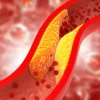How do you define mental health??
- How do you define mental health??
- Who is at risk of developing a mental disorder?
- How can a person check whether he/she is mentally healthy or not?
- Why is mental health so important?
- What are the factors that determine Our mental health?
- What is Mental illness?
- What are common mental illnesses?
- What are common signs of mental illness?
- How we can diagnose mental illness?
- Treatment for mental illness
- How to improve and maintain mental health?
- Awareness about mental health and illness.
Mental health is a positive state of mind, it is an adjustment of a human being emotionally, psychologically, and socially towards the world and surroundings, with maximum effectiveness and happiness in life.

Who is at risk of developing a mental disorder?
At any one time, a various set of individual, family, society, and structural factors may connect to protect or undermine mental health. Although most people are resilient, people who are exposed to unfavorable circumstances – including poverty, violence, disability, and inequality – are at higher risk. Defensive and risk factors include personal psychological and biological aspects, such as emotional skills as well as genetics. Many of the risk and shielding factors are impacted by changes in the brain system and/or function.
How can a person check whether he/she is mentally healthy or not?
There are points that determines the mentally healthy status of a person
- Positive attitude towards self.
- Identify personal identity.
- Maintain the balance between life process and environment.
- Personal independence of thoughts.
- People have accurate reality perception.
- People face life situations and stressors.
- Make decisions independently.
- A person changes, adjusts, and adapts himself/ herself in different situations.
- Person successful adaptation to stress that is age appropriate.
- No, self-harming and anti-social thoughts.
- Good self-esteem, and self-achievement.
Why is mental health so important?
Mental health is important to live a healthy life, sound full life, meaningful and goal-oriented life. If a person gets mentally disturbed automatically the person’s surroundings get affected and disturbed, for the healthy mental health of the family to be a healthy nation, first individual should have a peaceful good healthy mind status.
What are the factors that determine Our mental health?
Mental health is determined mainly by two factors: external and internal factors.
External factor
The following external factors are mentioned below which can affect the mental health of the individual
- Family
- Work
- Friends
- Environment
- Culture
- Mass media
- Life experience
- Trauma
- Substance abuse
Internal factor
Following internal factors which are connected with the biology of our body can affect our mental peace as mentioned below:-
- Hereditary.
- Endocrine gland hormonal imbalance. Nervous system malfunction
If there is a disturbance in any of both factors leads to mental instability or Mental illness
What is Mental illness?
It is an unsuccessful adaptation to external and internal environment stressors, as a result, individuals show inappropriate and incongruent behavior towards their surroundings, and the maladaptation of individuals interferes with the physical, social, occupational, and emotional dimensions of life.
What are common mental illnesses?
- Personality disorder
- Mood disorder
- Eating disorder
- Stress disorder
- Anxiety
- Panic attacks
- Sleeping disorder
Personality disorder
personality is a characteristic with which an individual is born or developed early in life when personality becomes inflexible and maladaptive and causes significant social or occupational impairment resulting in personality disorder. Example
- Antisocial personality disorder.
- Narcissistic personality disorder.
- Avoidant personality disorder.
Mood disorders
Mood is a pervasive and sustainable emotion that may have a major influence on a person’s perception of the world. When a person can’t sustain emotional balance then results in different emotional disorders. Like depression, mania, and bipolar.
Depression– alterations in mood expressed by feelings of deep sadness and despair.
Mania – alterations in mood expressed by feelings of elation, inflated self-esteem, hyperactivity, and acceleration in speaking.
Bipolar – it is characterized by mood swings from profound depression to extremely elevated mood, a sense of extreme well-being.
Eating disorder
As per the WHO report In 2019, 14 million people encountered eating disorders including nearly 3 million children and adolescents It is a psychological disorder when a person has abnormal or disturbed normal eating habits like anorexia nervosa or bulimia nervosa.
Anorexia nervosa – in this person stops or reduces food intake to an extinct level to overcome the fear of obesity. Bulimia nervosa – in this person is found of food, eats rapidly sometimes even without being chewed and eating gives pleasure to that person but, because of fear of obesity or becoming fat person induces vomit and sometimes misuses laxatives and enemas.
Anorexia nervosa usually has its onset during adolescence or early adulthood and is associated with sudden death due to medical complications or suicide. People with bulimia nervosa are at a significantly raised risk for substance use, suicidality, and health difficulties. Adequate treatment options exist, including family-based cure and cognitive-based therapy.
Stress disorder
There are two types of stress-related disorders explained below
Post-traumatic stress disorder (PTSD).
Children and adolescents with PTSD have symptoms such as endless, terrifying thoughts and remembrances or flashbacks of a traumatic event or affair. Other symptoms may include jumpiness, sleep problems, problems in school, avoidance of certain places or circumstances, depression, headaches, or stomach pains.
Acute stress disorder (ASD)
The symptoms of ASD are similar to PTSD but appear within the first month after exposure to trauma. Immediate treatment and suitable social support can decrease the risk of ASD developing into PTSD.
Anxiety Disorders
In 2019, 301 million individuals were living with an anxiety disorder having 58 million children and adolescents. Anxiety disorders are distinguished by excessive fear and worry and related behavioral disorders. Signs are severe enough to result in substantial distress or significant impairment in functioning. There are several distinct kinds of anxiety disorders, such as generalized anxiety disorder (characterized by extreme worry), panic disorder (characterized by panic attacks), social anxiety disorder (characterized by excessive fear and worry in social situations), separation anxiety illness (characterized by excessive fear or anxiety about detachment from those someones to whom the person has a deep emotional bond), and others. Effective psychological therapy exists, and depending on the age and severity, medicine may also be considered.
Panic attacks
A panic attack is a sudden beginning of extreme fear or discomfort that reaches a height within minutes triggered by various factors. It is a type of anxiety disorder described by a rapid and overwhelming surge of physical and psychological symptoms. These outbreaks can be unexpected or sudden and are usually accompanied by a sense of upcoming doom or a fear of losing control.
Common Symptoms of a Panic Attack
- Rapid Heartbeat: Vibrations or a pounding heart.
- Sweating: heavy sweating, even when the environment is cold.
- Trembling or Shaking: Uncontrollable strong shaking or trembling.
- Shortness of Breath: Feeling like you can’t get sufficient air or feeling like suffocation.
- Chest Pain or Discomfort: Usually defined as feeling like a heart attack.
- Nausea or Abdominal Discomfort: Upset stomach or a feeling of uneasiness in the abdomen.
- Feeling Dizzy, Lightheaded, or Faint: A feeling of losing balance or feeling faint.
- Chills or Hot Flashes: Encountering rash chills or waves of heat.
Sleeping disorder
Sleep disorders involve concerns with the quality, timing, and amount of sleep, which result in daytime distress and impairment in functioning. Sleep-wake diseases often occur along with medical conditions or other mental health conditions, such as depression, anxiety, or cognitive disorders. There are several distinct types of sleep-wake disorders, of which wakefulness is the most common. Other sleep-wake disturbances include obstructive sleep apnea, parasomnias, narcolepsy, and restless leg syndrome.
Sleep difficulties are connected to both physical and emotional problems. Sleep issues can both contribute to or heighten mental health conditions and can be a symptom of other mental health conditions.
About one-third of adults report insomnia manifestation and 6-10 % meet the standards for insomnia disorder
What are common signs of mental illness?
- Anger and aggression.
- Sudden mood changes.
- Unusual behavior.
- High sensitivity towards loud sound.
- Excessive talking or blackout.
- Sudden change in food habits, excessive eating, or stopping eating.
- Disoriented to time, place, and person.
- Isolated behavior.
- Being in a confused state.
- Hallucinating things.
- Somnolence or sleep deprivation.
- Speaking sentences out loud or whispering random things continuously.
How we can diagnose mental illness?
Mental illness is diagnosed by a psychiatrist using different question-answer sessions.
- Assessing your orientation.
- Checking your attention span.
- Checking your IQ level.
- Aptitude testing.
- History taking about signs.
- Examination by using a different set of questions like a mini-mental status examination. Neuropsychological testing is also done.
Treatment for mental illness
Neuropsychological treatment is done by psychotropic medication. Different therapies are used to relieve patient symptoms and help the patient to adjust to changes.
Psychosocial therapy.
Psychoanalytic therapy.
Individual therapy.
Behavioral therapy.
Family therapy.
Cognitive therapy.
Milieu therapy.
How to improve and maintain mental health?
We can improve and maintain our mental health in various ways as mentioned below
- Strongly managing life stressors.
- Manage life schedule and include self-pampering time.
- Regular consultant to the psychiatrist.
- Make a diet plan for eating healthy food.
- Doing regular exercise for a fresh body and mind.
- Share thoughts with loved ones and relatives.
- Engage yourself in the most liked things.
- Think positive, improve self-esteem
- Enjoy self-company.
- Take full rest and sleep.
- Adjusting yourself to changes.
- Explore life in the positive aspects of the world.
Awareness about mental health and illness.
Make a self-help group, talk to people around you, and share your life experiences with each other. There are many national and international mental health awareness groups that provides vast information about mental health get volunteers connected to them and also help people to join these types of groups like,
- Mental health America.
- National alliance on mental health.
- National institute of mental health.
To spread awareness World Mental Health Day is celebrated on October 10 with the symbol of green ribbon.
You can read the related articles Know all about HDL Cholesterol Multiple Sclerosis Cause, Symptoms, Diagnosis and Treatment What Is Epidemiology? History, Causation, Prevention


